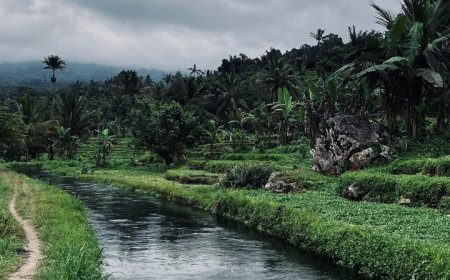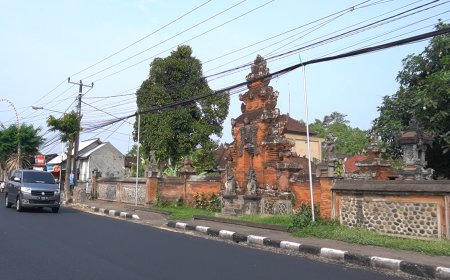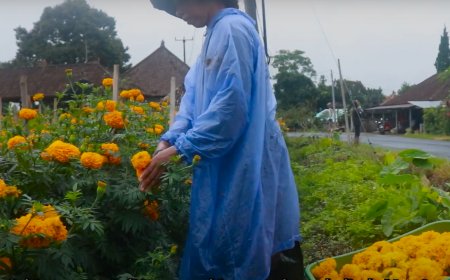Tohjiwa Village, a Traditional Village with Fascinating Taboos and Uniqueness
Tohjiwa Traditional Village, located in the Sidemen District of Bali, captures attention with its rich cultural and natural treasures. The community strictly adheres to a prohibition against parading ogoh-ogoh on the eve of pengerupukan, aiming to maintain the village's tranquility, deemed the abode of the gods. The four Pura Dalem in the village play a crucial role in preserving the balance of nature and engaging the community in religious ceremonies. Additionally, the village holds a special significance as it is honored by Ida Bhatara Turun Kabeh during the Panca Wali Krama ceremony at Pura Besakih, adding a sacred dimension. The scenic beauty, including terraced rice fields and picturesque hillsides, creates a harmonious blend of human and natural elements. In essence, Tohjiwa Traditional Village stands as a destination that seamlessly integrates Bali's cultural uniqueness and natural allure.
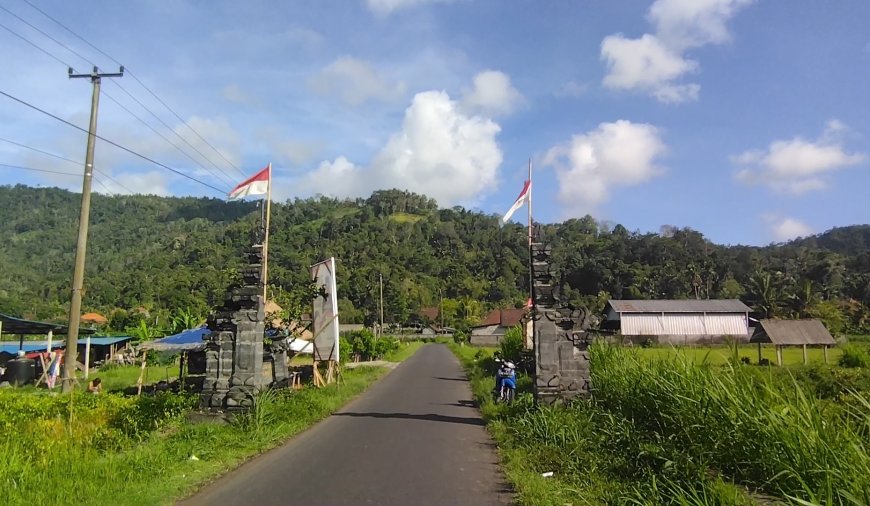
Bali, often dubbed as the "Island of the Gods" for its captivating natural beauty, rich culture, and unique traditional villages. One such village with a deep historical narrative and cultural heritage is the Tohjiwa Traditional Village. Geographically located in the Sidemen District, Karangasem Regency, Bali, this village boasts cultural and natural richness that captures the attention of many. What makes it extraordinary are the taboos and peculiarities associated with its traditions and the beliefs of its residents.
A longstanding prohibition in Tohjiwa is the strict restriction against parading ogoh-ogoh on the eve of Nyepi, a common practice in many Balinese villages to ward off evil spirits. In Tohjiwa, this act is considered taboo as it may disturb the village's tranquility and sanctity. The villagers firmly believe that Tohjiwa is the dwelling place of gods and ancestors, requiring meticulous respect and protection. Consequently, they strongly uphold maintaining peace and serenity, refraining from creating disturbances that could be seen as disruptive to the presence of their deities and ancestors.
History has taught the villagers valuable lessons on the importance of respecting these taboos. Past records reveal instances where attempts to parade ogoh-ogoh led to tragic events such as unusual deaths, disease outbreaks, and crop failures. These events serve as profound lessons, reinforcing the villagers' conviction to preserve the tranquility and sanctity of their village.
The prohibition against ogoh-ogoh parades during Nyepi is an integral part of Tohjiwa's cultural and spiritual identity. It is a form of reverence practiced diligently as a dedication to their gods and ancestors, as well as an effort to maintain the village's peace and fertility. This prohibition is not merely a restriction but a symbol of the profound connection between humans and spirituality that shapes their identity as a Bali community firmly rooted in belief and tradition.
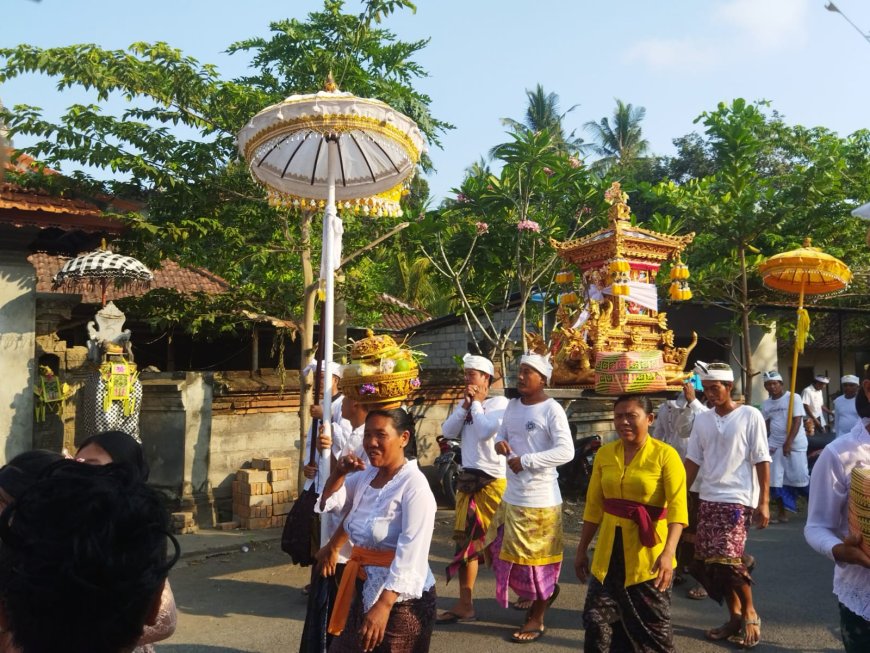
Ida Bhatara Mesucian (Photo Source: Personal Collection)
In addition to the taboos, Tohjiwa Village has its own uniqueness that sets it apart from other traditional villages. It is home to four Pura Dalem situated in the four corners of the village, dedicated to Dewa Siwa, the Hindu god of creation and destruction. Typically, a village has only one Pura Dalem for worshiping Dewa Siwa, but Tohjiwa's possession of four reflects the strong religious and spiritual bond among its residents. These temples play crucial roles in maintaining the balance of nature and conducting religious ceremonies that bind the village community in devotion to the gods.
Each of the four Pura Dalem complements one another in preserving religious and cultural traditions in Tohjiwa. They serve as unique venues for ceremonies, prayer gatherings, offerings, and celebrations of significant events in the villagers' lives. The four temples are Pura Dalem Gede Daton, Pura Dalem Lingsir, Pura Dalem Pendem, and Pura Dalem Tarukan, all dedicated to worshiping Dewa Siwa.
Tohjiwa Village also holds another intriguing aspect its status as one of the villages visited by Ida Bhatara Turun Kabeh during the Panca Wali Krama ceremony at Pura Besakih. In this sacred event, Ida Bhatara Turun Kabeh stops at the Pura Puseh in Tohjiwa, involving the procession of sacred symbols (pralingga or pratima) carried on bade or palanquins. Thousands of Balinese Hindus dressed in traditional attire participate in this procession, expressing gratitude and paying homage to Ida Bhatara Turun Kabeh. The atmosphere at Pura Puseh in Tohjiwa becomes highly sacred and vibrant during this event.
Furthermore, Tohjiwa Village is home to Pura Kawitan Pasek Tohjiwa, located not far from Pura Puseh. This temple is dedicated to the Pasek Tohjiwa family lineage, one of the nine Pasek groups in Bali, and is devoted to worshiping Atma Siddha Dewata a state where ancestral souls unite with Brahman, the source of all existence. The temple features simple yet beautiful architecture, including a candi bentar gateway, surrounded by lush greenery with the majestic Mount Agung in the background. Pura Kawitan Pasek Tohjiwa serves as a sacred and serene place for devotees and pilgrims to pray and seek blessings from their ancestors.
Tohjiwa Village not only offers its rich cultural heritage but also delights the eyes with breathtaking natural scenery. Positioned on the hillside, the village is surrounded by lush green terraced rice fields, creating a mesmerizing landscape. The beauty of nature provides a visually stunning and calming experience.
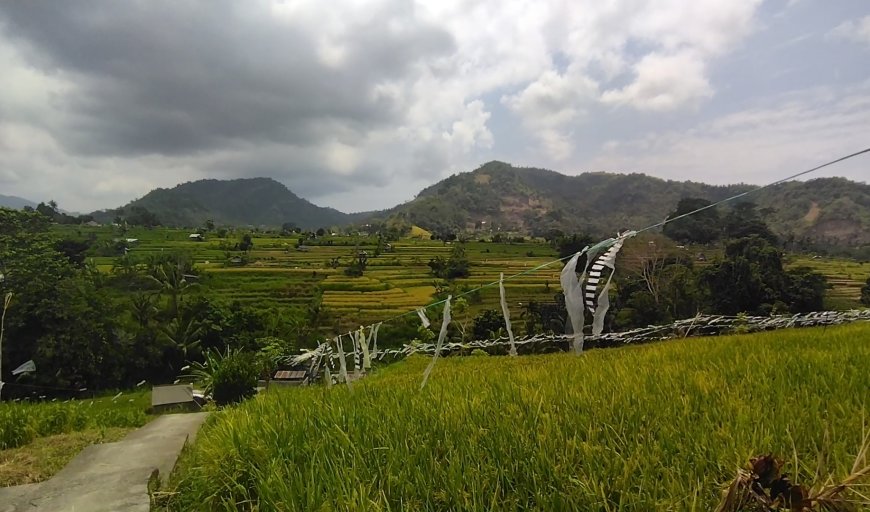
Terracing (Photo Source: Personal Collection)
The terraced rice fields are an impressive sight, stretching to the horizon and forming a harmonious and soothing view. The villagers have preserved and tended to these fields for centuries, reflecting the deep connection between humans and nature. It also plays a significant role in Bali's sustainable farming tradition.
In addition to the rice fields, the beautiful hills are a distinctive feature of Tohjiwa Village's scenery. The green, rolling hills add a dramatic and captivating element to the landscape, creating perfect settings for strolls, trekking, or simply enjoying the surrounding natural beauty. The lushness of the hills creates a tranquil atmosphere, offering an ideal place for relaxation.
The meandering waterways in the village add to its natural charm. The winding rivers and irrigation channels cutting through the fields and hills create a beautiful and fertile landscape. Water holds a crucial role in Bali's culture, and these water features reflect its central role in the villagers' lives.
A memorable backdrop is provided by Mount Agung, the highest and sacred volcano in Bali. Standing majestically behind the village, Mount Agung adds a deep spiritual touch, reminding the villagers of the presence of their gods and ancestors. The villagers regard this mountain as the dwelling place of their deities, and its majestic presence serves as a constant reminder of the spiritual essence embedded in their lives.
Tohjiwa Village exemplifies a perfect harmony between humans and nature. Its cultural uniqueness and natural charm create an extraordinary experience for anyone who visits the village. It is a place where eyes, minds, and souls can unite in the beauty of Bali's authentic nature and spirituality.




















